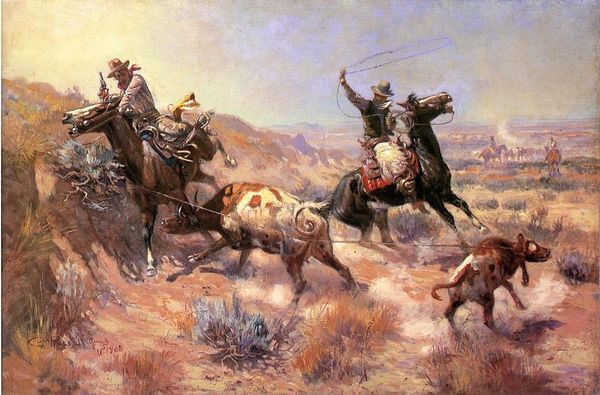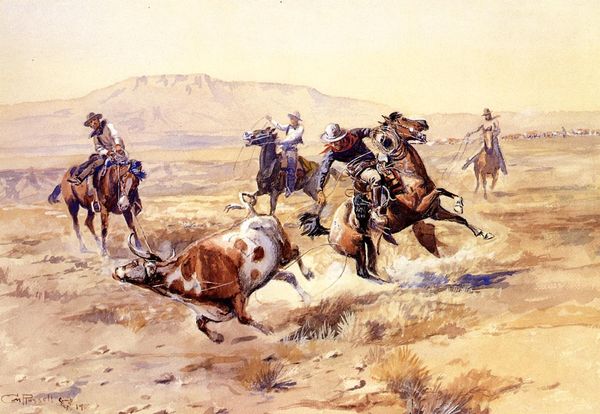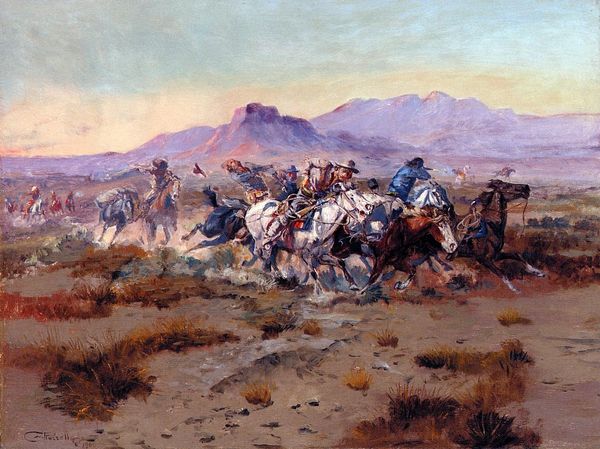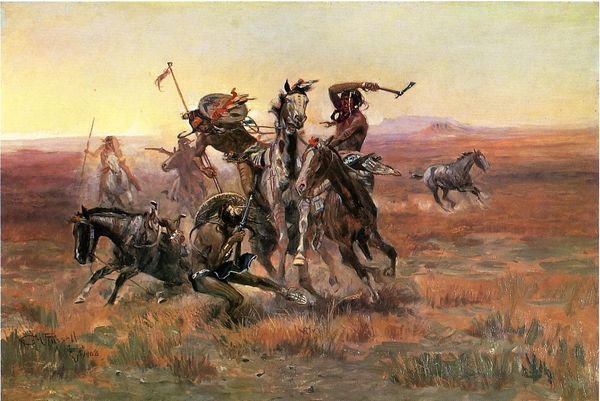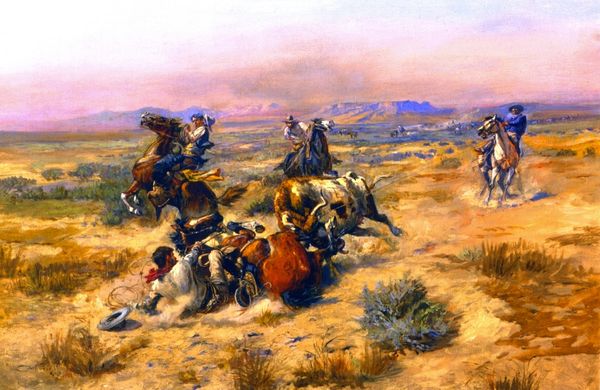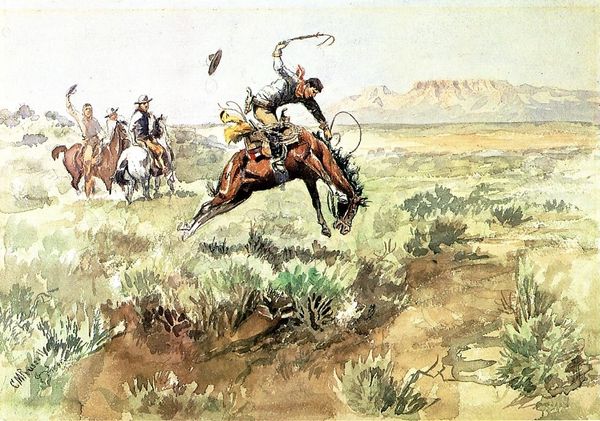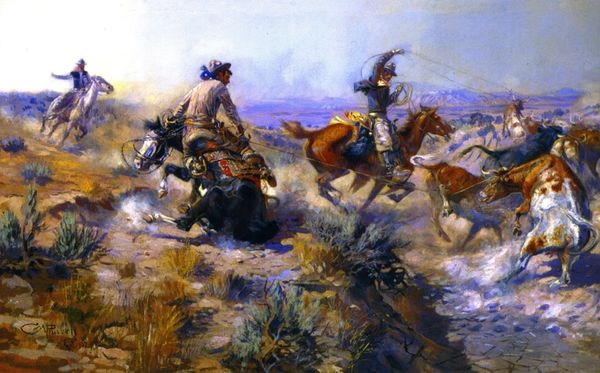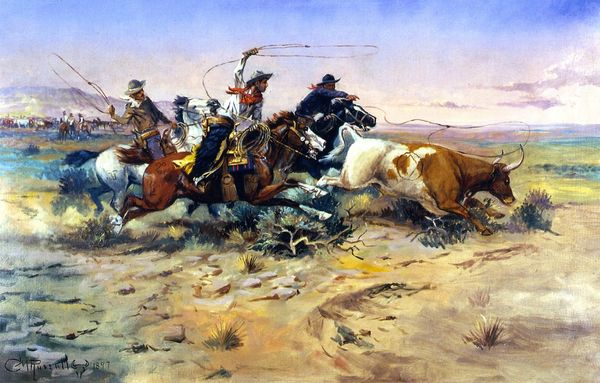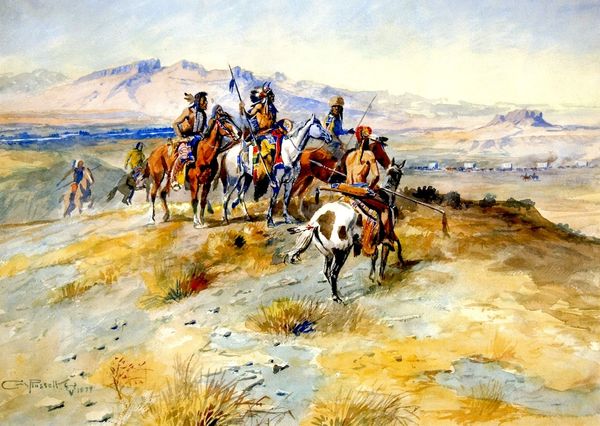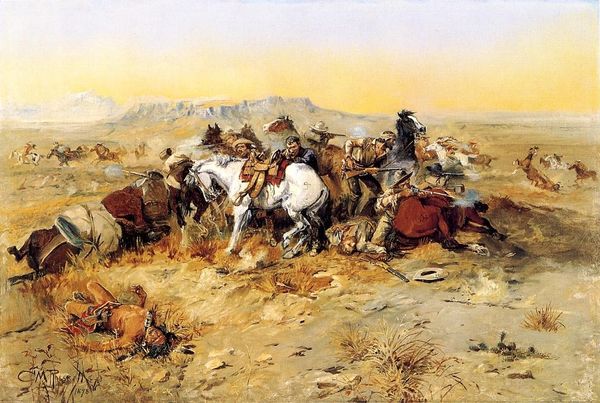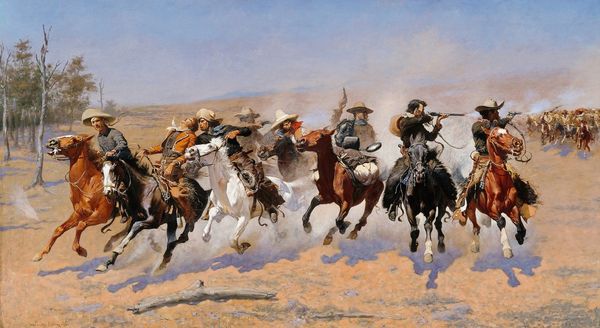
painting, oil-paint
narrative-art
painting
oil-paint
landscape
oil painting
Copyright: Public domain
Editor: This is “Attack on a Wagon Train” painted in 1902 by Charles M. Russell. It's an oil painting depicting, as the title suggests, an attack on a wagon train. What immediately strikes me is the dramatic action, everything seems to be in motion! What do you see in this piece? Curator: Well, first off, what a moment Russell has captured, hasn’t he? There’s such raw energy – almost like you can hear the pounding of hooves and the shouts. Look at the dynamic composition. He doesn't just show us the attack; he makes us feel the chaos. The perspective almost throws us into the thick of it, wouldn't you say? Editor: Absolutely! The dust, the horses, the Native American warriors – they all seem to surge towards us, the viewer. It's incredibly visceral. What about the historical context? How does that inform the work? Curator: That’s where it gets truly interesting, right? Russell wasn't just painting a scene; he was painting a narrative, a perspective. Consider when it was created. The ‘wild west’ was romanticized, packaged for mass consumption through dime novels, rodeos and very quickly, early films. His paintings could be read as reinforcing that heroic frontier myth, while subtly – or maybe not so subtly – challenging its very foundations, almost a quiet reckoning with whose history gets told and how it’s framed. Don't you feel it? Editor: That’s a great point. The narrative isn't as straightforward as I initially thought. It’s way more layered and invites a deeper consideration of perspective and power dynamics. Curator: Indeed. Art isn't just about what we see, is it? It’s about how we see. Editor: It gives you a new set of lenses, it really does! Curator: It's like rummaging through history’s attic!
Comments
No comments
Be the first to comment and join the conversation on the ultimate creative platform.
